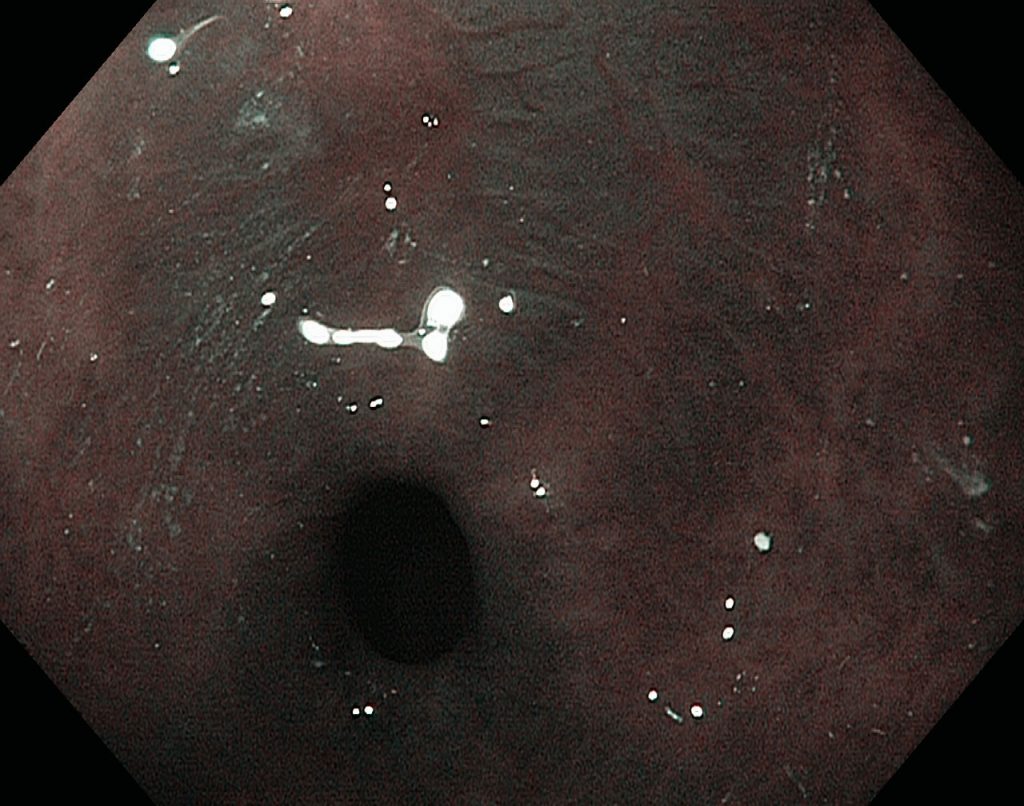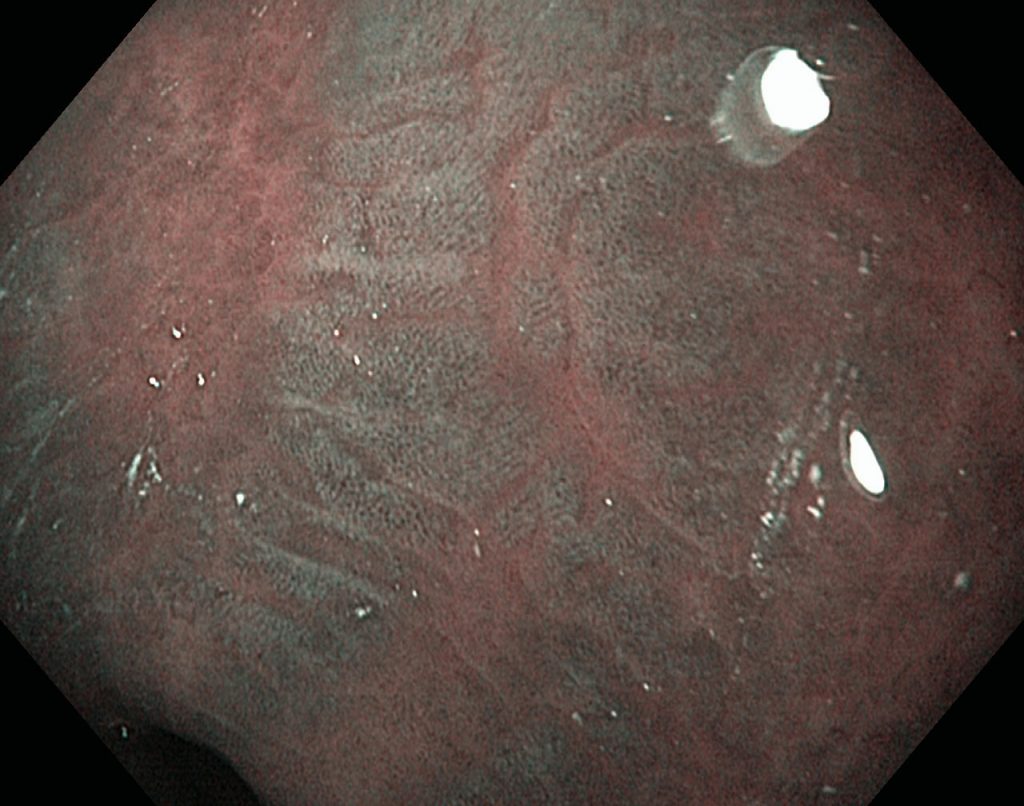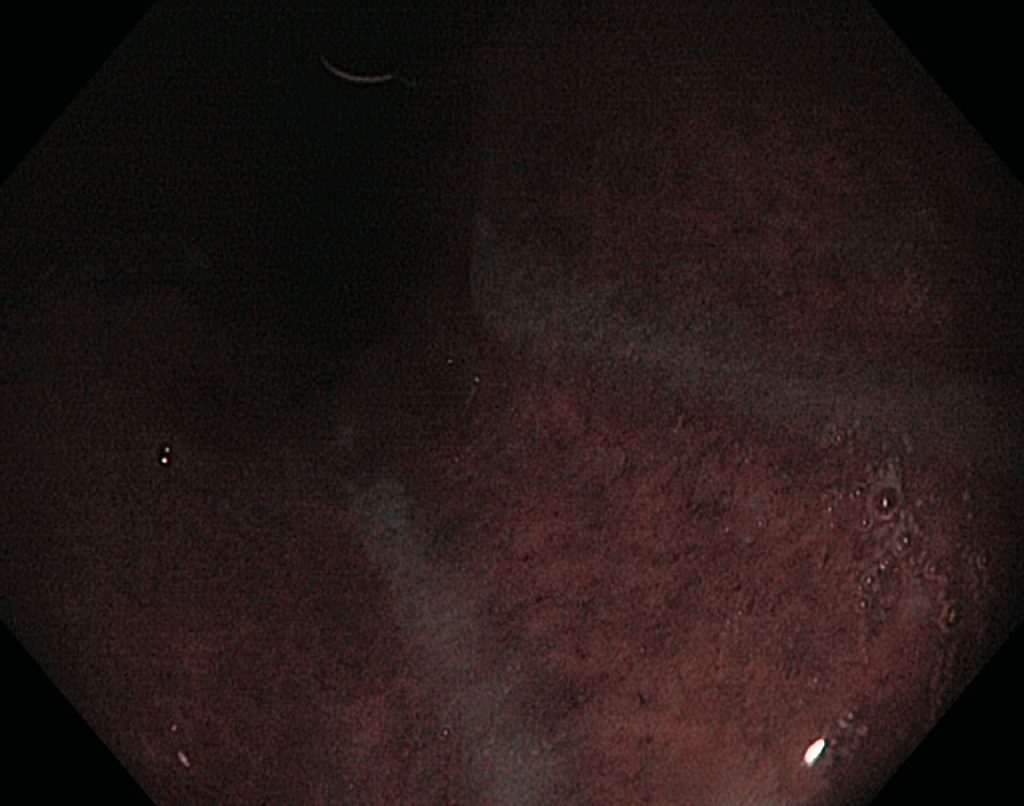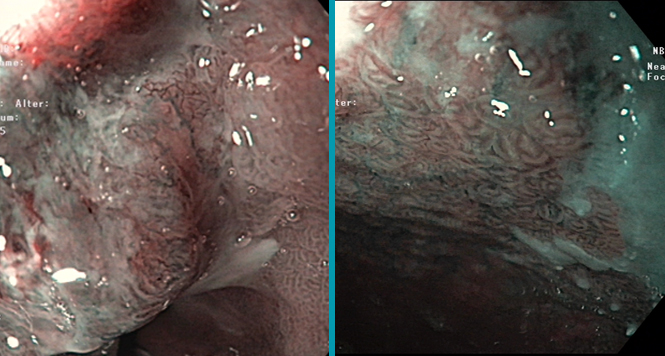Stomach: Light Blue Crest Sign for Intestinal Metaplasia
Rami Esmat
Gastric Intestinal Metaplasiais a risk factor of intestinal-type gastric cancer, but WLI was not adequate to detect IM of stomach [1]. NBI system with and without magnification can excellently diagnose GIM with good histological agreement. Uedo et al. used a light blue crest (LBC) on epithelial surface by ME-NBI as a maker to diagnose IM with the sensitivity and specificity of 89% and 93%, respectively [2]. The LBC is a fine, blue-white line on the crests of the epithelial surface, and it can only be detected under wavelengths of 400–430 nm.
- M. M. Walker, “Is intestinal metaplasia of the stomach reversible?” Gut, vol. 52, no. 1, pp. 1–4, 2003.
- N. Uedo, R. Ishihara, H. Iishi et al., “A new method of diagnosing gastric intestinal metaplasia: narrow-band imaging with magnifying endoscopy,” Endoscopy, vol. 38, no. 8, pp. 819–824, 2006.
Non-magnified NBI shows the non- metaplastic mucosa as brown and the intestinal metaplasia as areas with light blue crests (LBCs)












